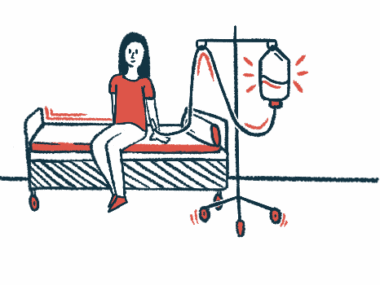Warming methods can aid minor surgeries in CAD patients: Report
Strategies prevent CAD complications in woman during emergency endoscopy
Written by |

A 76-year-old woman with cold agglutinin disease (CAD) underwent an emergency upper endoscopy, a procedure to look at the upper gastrointestinal tract, without any disease-related complications, thanks to warming strategies that prevented her body temperature from getting too low, a study shows.
Such strategies included raising the temperature of the operating room and pre-warming blood and other fluids before infusion. High-flow nasal prongs, a type of noninvasive respiratory support, successfully delivered heated and humidified oxygen.
Previous reports have described warming techniques for major surgeries, but not for smaller emergency surgeries, according to researchers.
“This [case] provides a practical alternative to previous literature that describes techniques for CAD patients undergoing major procedures under general anaesthesia,” researchers wrote.
The study, “Anesthesia for Urgent Gastroscopy in Cold Agglutinin Disease: A Case Report and Literature Review,” was published in Cureus.
Higher risk of complications with surgery, anesthesia for CAD patients
CAD is a rare autoimmune disease caused by cold agglutinins, which are self-reactive antibodies that bind to red blood cells at low temperatures, making them prone to form clumps and marking them for destruction (hemolysis). This leads to anemia (low red blood cell counts), fatigue, pain, and other symptoms.
Because CAD symptoms worsen at low temperatures, patients are at a higher risk of complications during surgeries, because operating rooms are often cold, as are many of the fluids and medications administered during surgery. Anesthesia poses a particular risk, as it may interrupt the body’s normal processes of temperature regulation.
For this reason, doctors typically take precautions when operating on someone with CAD.
In the report, three researchers in Australia described how they maintained the body temperature of a woman with CAD through an emergency upper endoscopy to prevent complications from cold-induced hemolysis.
During upper endoscopy, also known as gastroscopy, a thin, flexible tube with a camera is inserted into the mouth and guided down the throat to visualize the upper digestive tract.
Patients are typically under sedation, but the procedure doesn’t typically require general anesthesia to induce unconsciousness and unresponsiveness to pain.
The woman came to the hospital after experiencing several weeks of extreme tiredness and intermittent black stools, which can be a sign of bleeding in the upper gastrointestinal tract.
Her medical history was complex. In addition to CAD, she had recently been diagnosed with pulmonary embolism (a blood flow blockage in the lungs due to a blood clot) and was taking blood thinners.
She had a history of upper respiratory tract infection, chronic kidney disease, high blood pressure, depression, gastrointestinal issues, and iron deficiency. She also had Sjögren’s disease, an autoimmune condition that can lead to dryness of the eyes, mouth, and other tissues.
Blood tests revealed a large decrease in the levels of hemoglobin (the protein in red blood cells that transport oxygen), suggesting low red blood cell counts. While she tested positive for antibodies and/or other immune proteins bound to red blood cells — a sign of CAD — there were no elevations in hemolysis markers.
Doctors suspect upper gastrointestinal tract bleeding
These results, along with the black stool and use of blood thinners, led the clinical team to suspect upper gastrointestinal tract bleeding.
Given the patient’s complex health conditions, multi-disciplinary team of specialists in blood disorders, anesthesia, and gastrointestinal conditions was consulted before surgery. The team decided to continue with the surgery but take precautions to avoid low body temperatures that could cause CAD-related complications.
The temperature of the operating room was raised to 24 C (about 75 F), the warmest possible setting. The medical team arranged for warmed fluids and red blood cells for infusion. Although the clinicians requested warmed gases as well, this was not available at their hospital.
The woman received sedation anesthesia immediately before the procedure. Nasal probes delivered warmed, humidified air to support breathing, and her mouth and throat were sprayed with a warmed anesthetic to further prevent pain during the procedure.
In light of her Sjögren’s disease, the woman’s oral cavity was moistened with warmed water to allow the probe to pass through safely.
The woman’s body temperature was within the normal range before and after the procedure. Over the next day, her hemoglobin had increased and remained stable, and “no clinical or biochemical indicators of CAD … were found in follow-up care,” the team wrote.
After a day of monitoring, the woman was discharged from the hospital, with a planned follow-up at the blood disorders clinic and a colonoscopy, which allows the visualization of the lower gastrointestinal tract.
“Although several case reports have described the anaesthetic management of CAD in the context of major … surgery, to our knowledge this is the first detailed description of management in an urgent endoscopic case,” the researchers wrote, adding that their preventive strategies may provide a template for similar cases.







